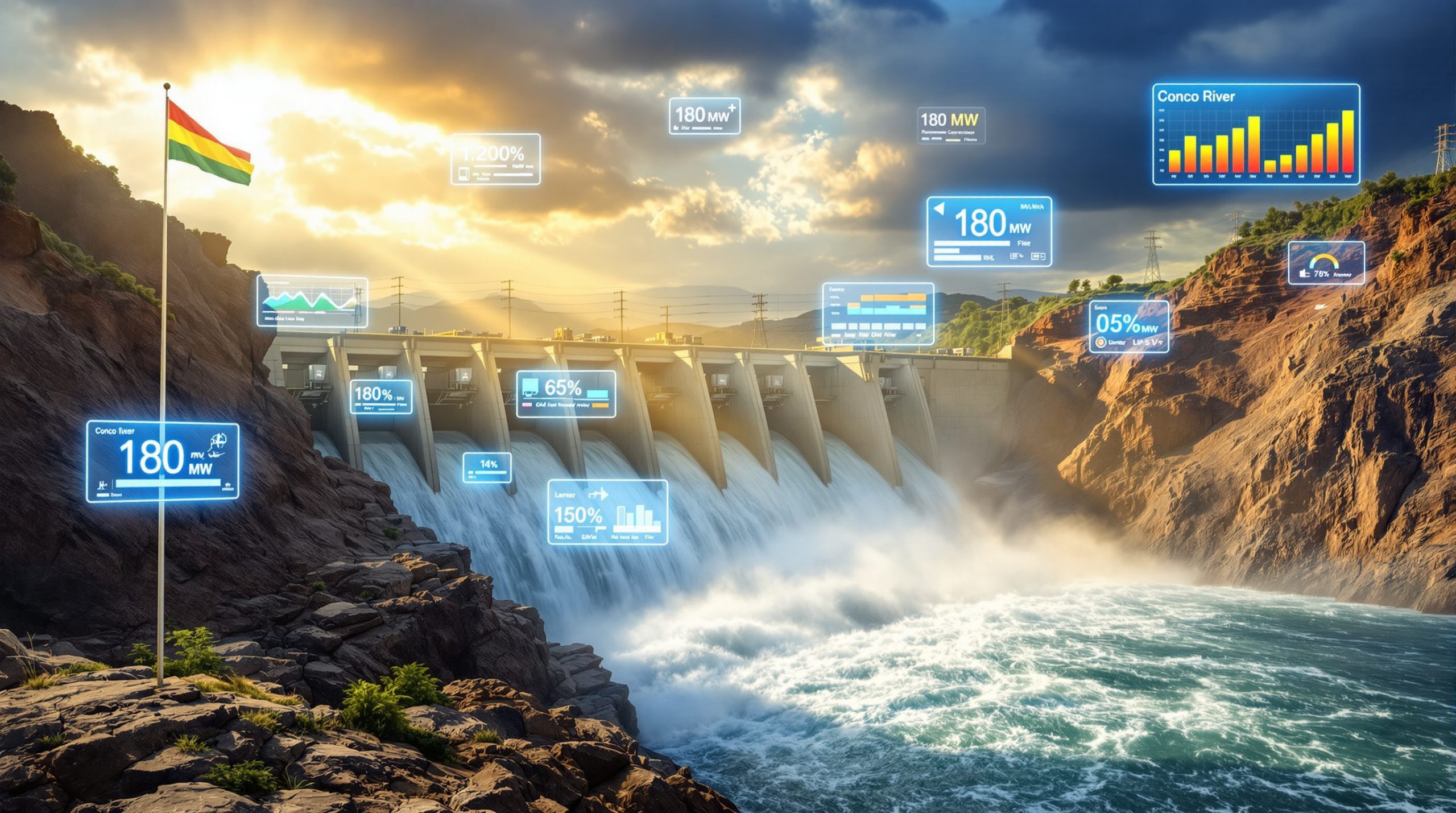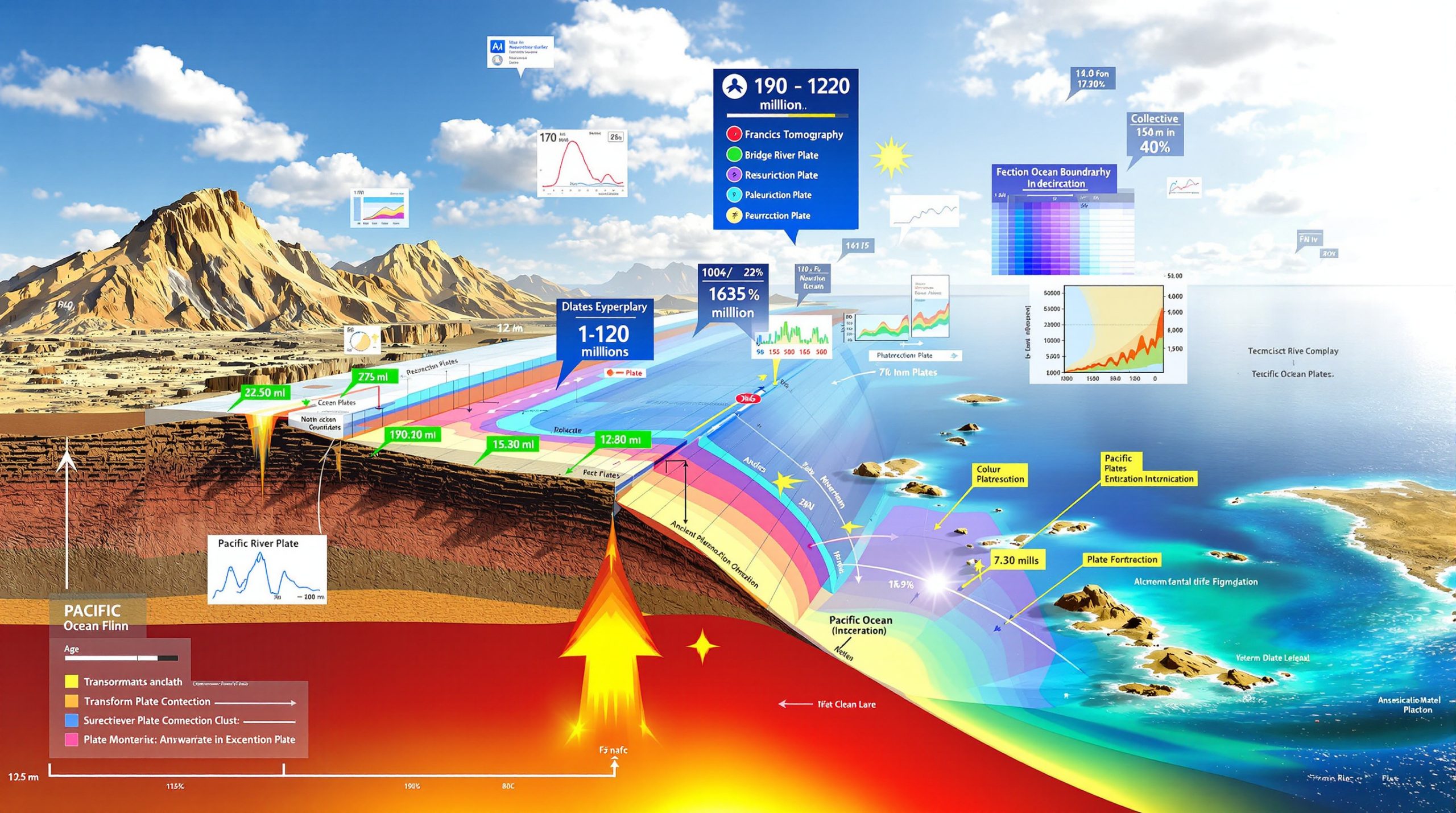The refurbished Inga II hydroelectric dam exemplifies how systematic component replacement can unlock dormant energy potential within existing facilities, demonstrating advanced approaches to power generation modernisation across Central Africa. Furthermore, these sophisticated mining operations technology systems require comprehensive infrastructure development to support regional industrial growth.
The Congo River's hydroelectric infrastructure represents one of Africa's most significant untapped energy resources, with the 1,424 MW Inga II facility serving as a cornerstone for regional industrial development. Through comprehensive turbine rehabilitation programs, individual units can be restored from non-operational status to full 178-180 MW capacity, supporting both national grid stability and dedicated industrial power supply arrangements.
Strategic Turbine Component Modernisation Framework
The refurbishment process for large-scale hydroelectric turbines involves multiple interconnected systems requiring precise coordination between mechanical restoration and electrical integration. Turbine #5 at the refurbished Inga II hydroelectric dam achieved operational capacity through systematic replacement of aging components, advanced control system installation, and comprehensive grid synchronisation protocols.
Mechanical System Rehabilitation Specifications
Core Component Replacement Programme:
- Turbine rotor systems: Complete overhaul of runner assemblies and mechanical bearings
- Sealing mechanisms: Advanced materials for improved water-tight performance
- Control valve systems: Modernised flow regulation with enhanced precision
- Generator coupling: Upgraded mechanical connections for improved efficiency
The mechanical restoration achieved 180 MW output capacity, representing a 1.1% improvement over original 178 MW specifications. This performance increase demonstrates how modern component materials and precision manufacturing can enhance legacy hydroelectric infrastructure beyond initial design parameters.
Electrical Control System Integration
Contemporary control systems enable real-time monitoring and automated adjustment of turbine operations, supporting grid stability requirements while maximising power output efficiency. Moreover, these systems integrate seamlessly with current mining industry trends that emphasise technological advancement. The electrical modernisation includes:
Table 1: Electrical System Upgrade Components
| Component Category | Technical Specification | Performance Impact |
|---|---|---|
| Grid Synchronisation | Automated frequency matching | Stable 180 MW delivery |
| Voltage Regulation | Dynamic control systems | Consistent power quality |
| Load Management | Computerised distribution | Optimised capacity utilisation |
| Safety Systems | Redundant protection protocols | Operational reliability |
Grid Integration Challenges and Infrastructure Solutions
Successful power delivery from refurbished turbine systems requires coordinated infrastructure upgrades across transmission and distribution networks. The integration of Turbine #5 capacity necessitated systematic improvements to substation equipment and voltage stabilisation systems.
Voltage Stability System Implementation
Resistor Bank Configuration:
The Inga substation (SCI) received resistor bank installations in May 2025, establishing foundation-level voltage control for high-capacity power transmission. These systems dissipate reactive power and stabilise voltage fluctuations during peak demand periods.
Correspondingly, Kolwezi substation (SCK) upgrades focus on voltage stability for industrial power delivery, with resistor bank completion scheduled for Q4 2025. This infrastructure enables consistent 50 MW delivery to the Kamoa-Kakula Copper Complex while maintaining grid frequency standards.
Advanced Power Electronics Integration
Static Compensator Technology:
The static compensator system scheduled for early Q1 2026 represents advanced power electronics technology for rapid reactive power adjustment. In addition, the Turbine 5 refurbishment at the Inga II hydropower station demonstrates international best practices in hydroelectric rehabilitation. This equipment enables:
- Dynamic voltage support: Real-time compensation for load variations
- Power quality enhancement: Harmonic filtering and distortion reduction
- Transmission capacity increase: Supports 100 MW delivery to industrial users
Filter Bank System Development:
Harmonic filtering systems remove electrical distortions from high-capacity power transmission, supporting maximum 150 MW delivery capacity by H1 2027. The phased implementation over 18 months demonstrates systematic approach to power quality optimisation.
Industrial Power Supply Architecture for Mining Operations
Large-scale copper mining operations require dedicated power infrastructure to support continuous processing operations and maintain production efficiency. The Kamoa-Kakula Copper Complex represents a model for industrial power diversification through hydroelectric, imported, and renewable energy sources.
Power Demand Scaling Analysis
Table 2: Industrial Power Supply Projections (2025-2028)
| Year | Total Demand (MW) | SNEL Grid Supply (MW) | Third-Party Imports (MW) | On-Site Solar (MW) | Total Available (MW) |
|---|---|---|---|---|---|
| 2025 | 208 | 110 | 100 | 0 | 210 |
| 2026 | 271 | 180 | 100 | 60 | 340 |
| 2027 | 292 | 210 | 100 | 60 | 370 |
| 2028 | 347 | 210 | 100 | 60 | 370 |
The power supply architecture demonstrates strategic diversification, with domestic SNEL grid supply increasing from 110 MW to 210 MW between 2025 and 2027. This growth directly correlates with refurbished Inga II hydroelectric dam capacity and grid infrastructure improvements.
Mining Process Power Requirements
Continuous Operation Power Profile:
Copper mining operations demand uninterrupted electrical supply for:
- Ore processing circuits: High-power grinding mills and flotation systems
- Materials handling: Conveyor systems and crushing equipment
- Water management: Pumping and treatment facilities
- Ventilation systems: Underground air circulation and safety equipment
Industrial power quality requirements include stable voltage regulation, low harmonic distortion, and minimal supply interruptions to prevent equipment damage and production losses. However, these demands align with broader copper price insights that suggest continued growth in metal processing requirements.
Environmental Considerations for River-Based Power Generation
The Congo River system presents unique operational challenges for hydroelectric facilities, including seasonal flow variations, sediment management, and environmental protection requirements. These factors significantly influence turbine performance optimisation and maintenance scheduling.
Seasonal Flow Impact on Power Generation
River Flow Variability Analysis:
- Dry season capacity: Reduced water flow affects turbine efficiency
- Wet season optimisation: Maximum flow periods enable peak power generation
- Sediment load management: Filtration systems protect turbine components
- Environmental flow requirements: Minimum discharge maintenance for ecosystem protection
Long-Term Operational Sustainability
The successful rehabilitation of individual turbines provides insights for broader Inga complex development potential. The Congo River system supports multiple additional hydroelectric development opportunities, with the refurbished Inga II hydroelectric dam serving as proof-of-concept for larger-scale infrastructure projects.
Regional Energy Security and Economic Development Impact
Domestic hydroelectric capacity development reduces dependency on imported electricity while supporting industrial growth and economic diversification objectives. The restoration of 180 MW capacity from a single turbine demonstrates significant potential for energy independence advancement.
Strategic Energy Independence Framework
Power Import Reduction Strategy:
Current power supply arrangements include 100 MW third-party imports alongside domestic generation. Successful turbine refurbishment programmes can systematically reduce import dependency while providing cost-effective renewable energy for industrial development.
Consequently, these developments support comprehensive renewable energy innovations across the mining sector. Furthermore, the Ivanhoe Mines completion of hydropower ramp-up demonstrates successful implementation of large-scale renewable power solutions.
"Hydroelectric rehabilitation projects typically achieve 95-105% of original capacity specifications, with modern control systems and component materials often exceeding legacy performance standards."
Investment Models for Hydroelectric Infrastructure Development
The refurbishment approach demonstrates capital-efficient methods for increasing power generation capacity without constructing new facilities. This investment strategy provides valuable insights for similar infrastructure modernisation projects across sub-Saharan Africa.
Public-Private Partnership Structure
Financing and Risk Allocation:
- Capital investment sharing: Government infrastructure ownership with private operational expertise
- Revenue generation models: Long-term power purchase agreements with industrial users
- Technical risk management: Specialised engineering partnerships for complex rehabilitation projects
- Operational sustainability: Maintenance and performance optimisation protocols
Cost-Benefit Analysis Framework
The refurbishment investment model prioritises restoration of existing assets over new construction, providing insights that align with strategic investment strategy insights for infrastructure development:
- Reduced capital requirements: Component replacement versus complete facility development
- Shorter implementation timelines: 18-month rehabilitation versus multi-year construction projects
- Established transmission infrastructure: Existing grid connections reduce additional investment needs
- Proven technology integration: Modern systems compatibility with legacy hydroelectric infrastructure
Technical Standards and International Best Practices
The Turbine #5 refurbishment incorporates international standards for hydroelectric rehabilitation, including mechanical component specifications, electrical system integration, and grid synchronisation protocols used in similar projects globally.
Performance Benchmark Comparison
Table 3: Refurbishment Performance Metrics
| Performance Indicator | Inga II Achievement | International Standard Range |
|---|---|---|
| Capacity Restoration | 100% (178→180 MW) | 95-105% typical |
| Grid Integration Timeline | 18 months total | 12-24 months standard |
| Industrial Power Allocation | 84% of output (150/180 MW) | 60-90% typical range |
| Operational Reliability | Sustained delivery | 95%+ availability target |
Future Development Implications for Congo River Hydroelectric Potential
The successful restoration of individual turbine capacity demonstrates technical feasibility for broader Inga complex development. The remaining seven turbines at the facility represent additional 1,244 MW potential capacity for systematic refurbishment programmes.
Scaling Potential Assessment
Incremental Development Strategy:
- Phase 1: Turbine #5 completion (180 MW active)
- Phase 2: Additional turbine rehabilitation (targeting 2-3 units)
- Phase 3: Complete facility restoration (1,424 MW total capacity)
- Phase 4: Inga III development consideration (additional Congo River sites)
This phased approach enables systematic capacity expansion while validating technical approaches and financing models for larger-scale development initiatives.
Frequently Asked Questions
What is the total installed capacity of the Inga II facility?
The complete installation comprises eight turbines with 1,424 MW combined capacity. Currently, Turbine #5 operates at full 180 MW output, with the remaining seven units representing significant additional potential for refurbishment programmes.
How does refurbished turbine performance compare to original specifications?
Turbine #5 achieved 180 MW output versus 178 MW original specification, representing a 1.1% performance improvement through modern component materials and precision manufacturing techniques.
What percentage of generated power supports industrial operations?
Approximately 28% of current output (50 MW of 180 MW) serves the Kamoa-Kakula Copper Complex, with allocation projected to increase to 150 MW (83% of capacity) following grid infrastructure completion.
What timeline is required for similar turbine rehabilitation projects?
The Turbine #5 refurbishment required 18 months total implementation, including mechanical component replacement (Q3 2025), synchronisation testing (early Q4 2025), and grid integration infrastructure development through H1 2027.
How do seasonal river conditions affect hydroelectric performance?
Congo River flow variations impact turbine efficiency during dry seasons while enabling maximum generation during wet periods. Sediment management systems protect mechanical components, while environmental flow requirements ensure ecosystem sustainability.
Disclaimer: The technical specifications and performance projections presented are based on publicly available information from project announcements and may be subject to operational variations and technical modifications during implementation phases.
Looking to Capitalise on Africa's Energy Infrastructure Revolution?
Discovery Alert's proprietary Discovery IQ model provides instant notifications on significant ASX mineral discoveries, enabling investors to identify actionable opportunities in energy-critical commodities like copper before the broader market responds. Start your 30-day free trial today and gain the market-leading advantage you need to position yourself ahead of major infrastructure developments.




